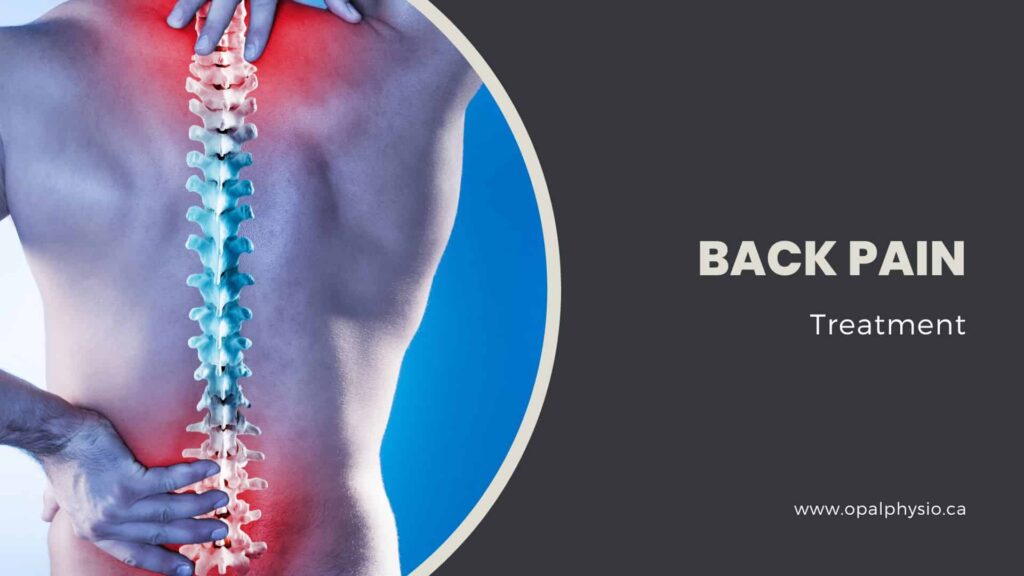Chronic back pain is a prevalent condition that affects millions of people worldwide, often leading to significant discomfort and reduced quality of life. Understanding the causes, treatment options, and lifestyle changes that can alleviate chronic back pain is crucial for managing this condition effectively. Here’s a comprehensive guide on everything you need to know about chronic back pain treatment.
Understanding Chronic Back Pain
Chronic back pain is defined as pain that persists for 12 weeks or longer, even after an initial injury or underlying cause of acute low back pain has been treated. It can occur due to various reasons, including:
- Degenerative Disc Disease: The natural aging process can cause the discs in the spine to break down, leading to pain.
- Herniated Disc: When the soft material inside the disc pushes out, it can press on nerves, causing pain.
- Spinal Stenosis: Narrowing of the spinal canal can compress nerves, leading to chronic pain.
- Muscle or Ligament Strain: Repeated heavy lifting or sudden awkward movements can strain back muscles and spinal ligaments.
- Arthritis: Osteoarthritis can affect the lower back, and in some cases, lead to a narrowing of the space around the spinal cord.
Diagnosis of Chronic Back Pain
Diagnosing chronic back pain typically involves a combination of:
- Medical History and Physical Examination: A doctor will assess your symptoms, medical history, and perform a physical exam to identify the pain source.
- Imaging Tests: X-rays, MRIs, or CT scans can help visualize the spine and identify structural problems.
- Nerve Studies: Electromyography (EMG) can evaluate the electrical activity of nerves and muscles.
Treatment Options for Chronic Back Pain
Effective management of chronic back pain often requires a multi-faceted approach, including both non-surgical and surgical treatments.
Non-Surgical Treatments:
-
Medications:
- Pain Relievers: Over-the-counter (OTC) medications like acetaminophen or nonsteroidal anti-inflammatory drugs (NSAIDs) can help reduce pain and inflammation.
- Muscle Relaxants: These can be prescribed for short-term relief of severe pain.
- Antidepressants: Certain types of antidepressants, particularly tricyclics, have been found to relieve chronic back pain.
-
Physical Therapy:
- Exercises: A tailored exercise program can strengthen the muscles supporting the spine, improve flexibility, and reduce pain.
- Manual Therapy: Techniques such as spinal manipulation or mobilization can be beneficial.
- Posture Training: Learning to maintain proper posture can alleviate strain on the back.
-
Lifestyle Modifications:
- Weight Management: Maintaining a healthy weight can reduce strain on the back.
- Ergonomics: Adjusting your workstation to ensure proper posture can prevent and reduce pain.
- Regular Physical Activity: Staying active with low-impact activities such as walking, swimming, or cycling can keep your back healthy.
-
Alternative Therapies:
- Acupuncture: This traditional Chinese medicine technique can provide pain relief for some individuals.
- Massage Therapy: Regular massages can reduce muscle tension and improve blood flow to the back.
- Yoga and Pilates: These practices can improve flexibility, strength, and posture.
-
Injections:
- Corticosteroid Injections: These can reduce inflammation around the nerve roots.
- Nerve Blocks: Anesthetic or steroid medications are injected near the nerves causing pain.
Surgical Treatments:
Surgery is usually considered only when other treatments have failed to provide relief, and the pain is severely impacting daily activities. Some surgical options include:
- Discectomy: Removal of the herniated portion of a disc to relieve nerve pressure.
- Laminectomy: Removal of part of the vertebra to relieve pressure on the spinal cord or nerves.
- Spinal Fusion: Fusing two or more vertebrae together to provide stability.
- Artificial Disc Replacement: Replacing a damaged disc with an artificial one.
Coping and Support
Living with chronic back pain can be challenging, but there are strategies to help cope with the condition:
- Pain Management Programs: Comprehensive programs that combine physical therapy, counseling, and education can be effective.
- Support Groups: Connecting with others who have chronic back pain can provide emotional support and practical advice.
- Mind-Body Techniques: Practices such as meditation, mindfulness, and biofeedback can help manage pain and improve mental well-being.












